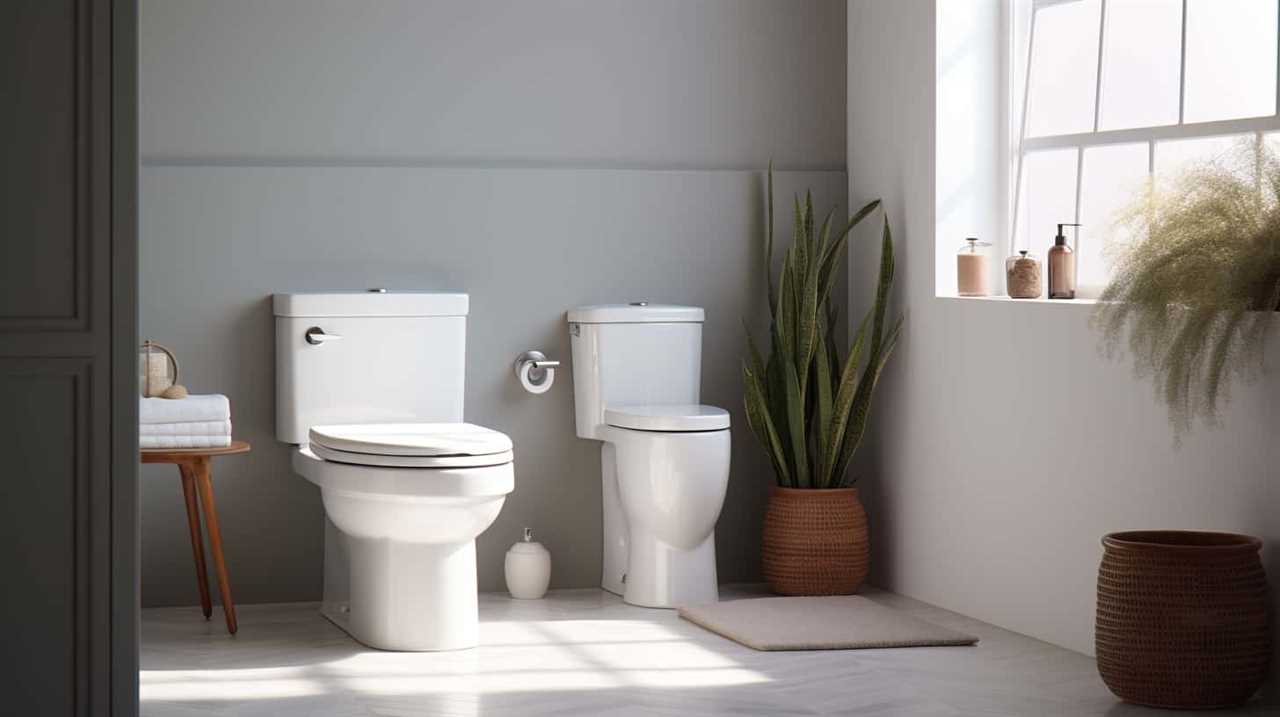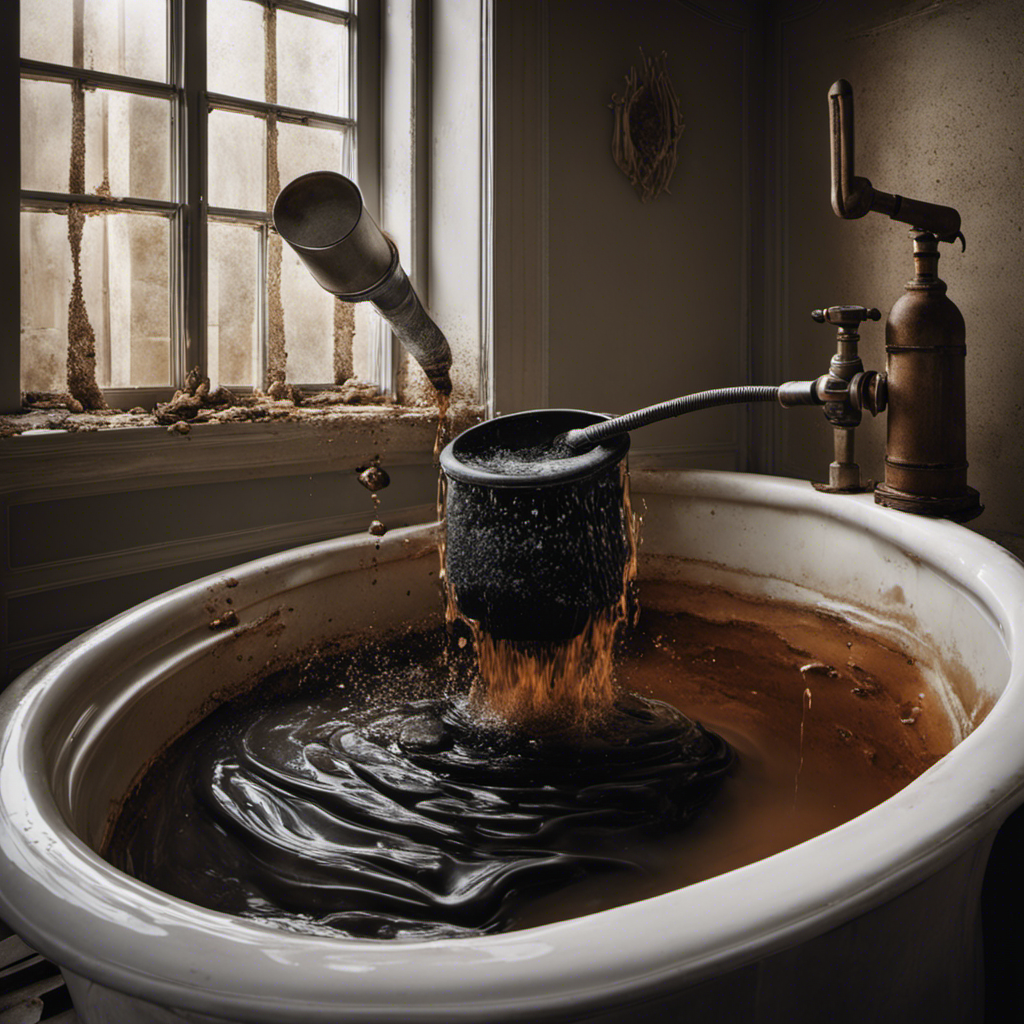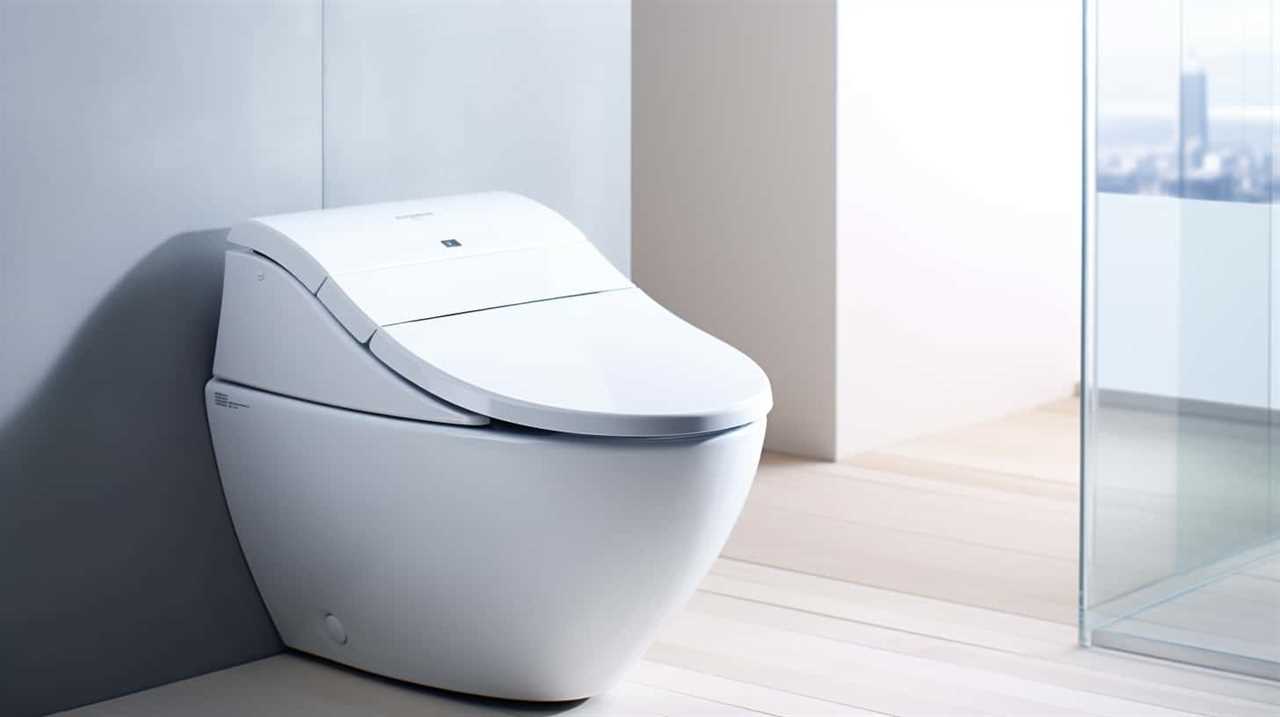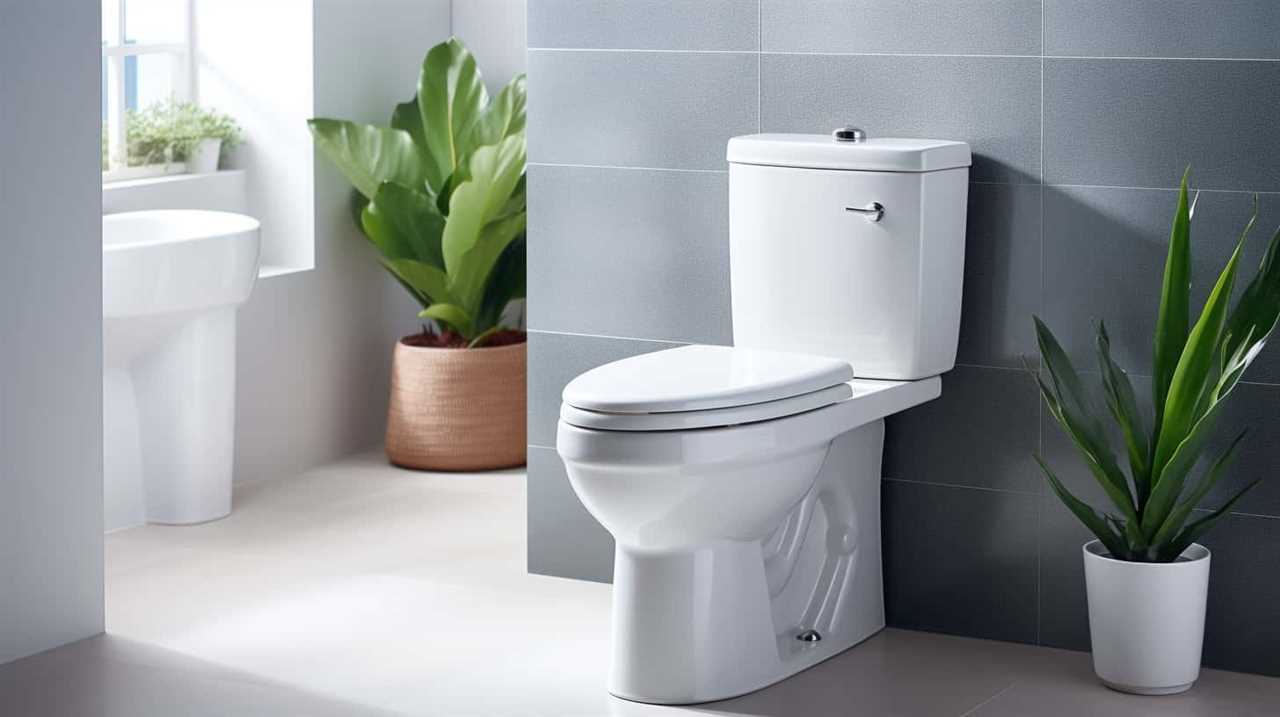Are you tired of dealing with a leaky or outdated toilet tank? We’ve got great news for you: replacing just the tank can be a game-changer!
Say goodbye to constant repairs and hello to a sleek, efficient upgrade. In this article, we’ll guide you through the process step-by-step, providing all the tips and considerations you need for a successful DIY project.
Get ready to master the art of toilet tank replacement and transform your bathroom experience. Let’s dive in!
Key Takeaways
- Replacing the toilet tank is important as it increases the lifespan of the toilet, prevents water leaks and damage, improves flushing efficiency, reduces water consumption, and enhances the overall appearance of the bathroom.
- Signs that indicate the need for tank replacement include constant water leaks, cracks or damage on the tank, poor flushing performance, excessive water usage, and an outdated or unattractive design.
- Factors to consider before replacing the tank include compatibility with the existing toilet bowl, water-saving features, material and durability, cost and budget, and installation complexity.
- The steps to replace the toilet tank involve turning off the water supply, emptying the tank and disconnecting the water supply line, removing the old tank by unscrewing the bolts, installing the new tank by aligning it with the bowl and securing the bolts, and reconnecting the water supply line and turning on the water.
Reasons to Replace Your Toilet Tank
One of the main reasons we may need to replace our toilet tank is if it’s leaking water. Not only does a leaking toilet tank waste water, but it can also lead to higher water bills and potential water damage to our home.
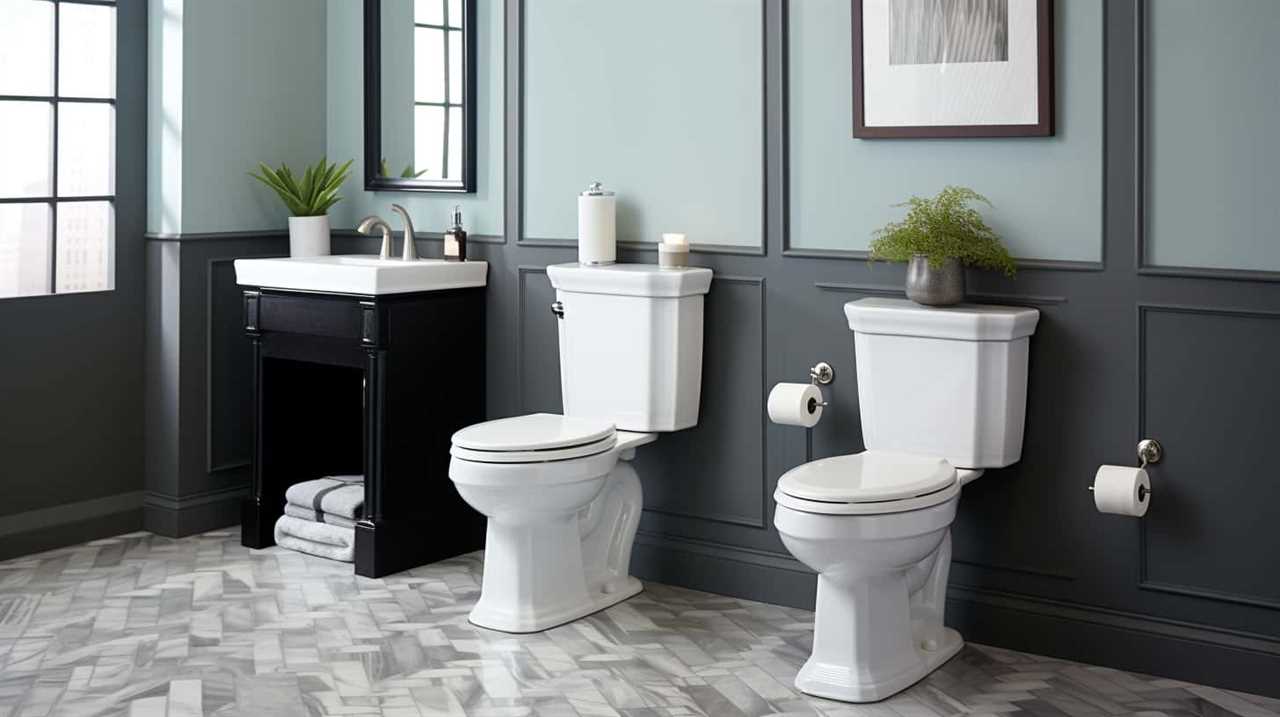
Upgrading to a dual flush toilet offers several benefits. Firstly, it provides two flushing options – a full flush for solid waste and a half flush for liquid waste, resulting in significant water savings. Secondly, dual flush toilets are more efficient in removing waste, reducing the chances of clogs and the need for multiple flushes.
Additionally, old toilet tanks can have a negative environmental impact. Upgrading to a dual flush toilet helps conserve water, reducing our overall water consumption and contributing to a more sustainable future.
Tools and Materials Needed for the Replacement
To successfully replace the toilet tank, we’ll need a few essential tools and materials. First and foremost, it’s crucial to ensure toilet tank compatibility. This means measuring the dimensions of your current tank and purchasing a replacement tank that fits perfectly. You’ll need a tape measure to accurately measure the width, height, and depth of the tank.
Additionally, you’ll require an adjustable wrench to disconnect the water supply line and remove the old tank. A screwdriver will be necessary to detach any bolts or screws securing the tank to the bowl.

To seal the new tank to the bowl, you’ll need a wax ring and bolts. Lastly, have a bucket and towels handy to catch any water or clean up spills.
Step-By-Step Guide to Replacing the Toilet Tank
Now, let’s dive into the step-by-step process of replacing the toilet tank using our trusty tools and materials.
- First, turn off the water supply to the toilet by shutting off the valve located near the base.
- Next, flush the toilet to drain any remaining water from the tank.
- Disconnect the water supply line from the tank and remove the nuts securing the tank to the bowl.
- Carefully lift the tank off the bowl and set it aside.
- Place a new wax ring on the bowl’s outlet and position the new tank onto the bowl, aligning the mounting holes.
- Secure the tank to the bowl using the nuts provided.
- Reconnect the water supply line and turn on the water.
- Finally, check for any leaks and make sure the tank is functioning properly.
When replacing the toilet tank, there are some common mistakes to avoid.
- One mistake isn’t shutting off the water supply before starting the installation process, which can lead to water damage.
- Another mistake isn’t properly aligning the tank with the bowl, which can cause leaks and instability.
- Additionally, over-tightening the nuts can lead to cracks in the tank or bowl, so be sure to tighten them just enough to create a secure seal.
- Lastly, not checking for leaks after installation can result in water damage or inefficient water usage.
Tips for a Successful DIY Tank Replacement
To ensure a successful DIY tank replacement, it is important to follow these helpful tips and techniques. Here are some common mistakes to avoid and troubleshooting tips to keep in mind:
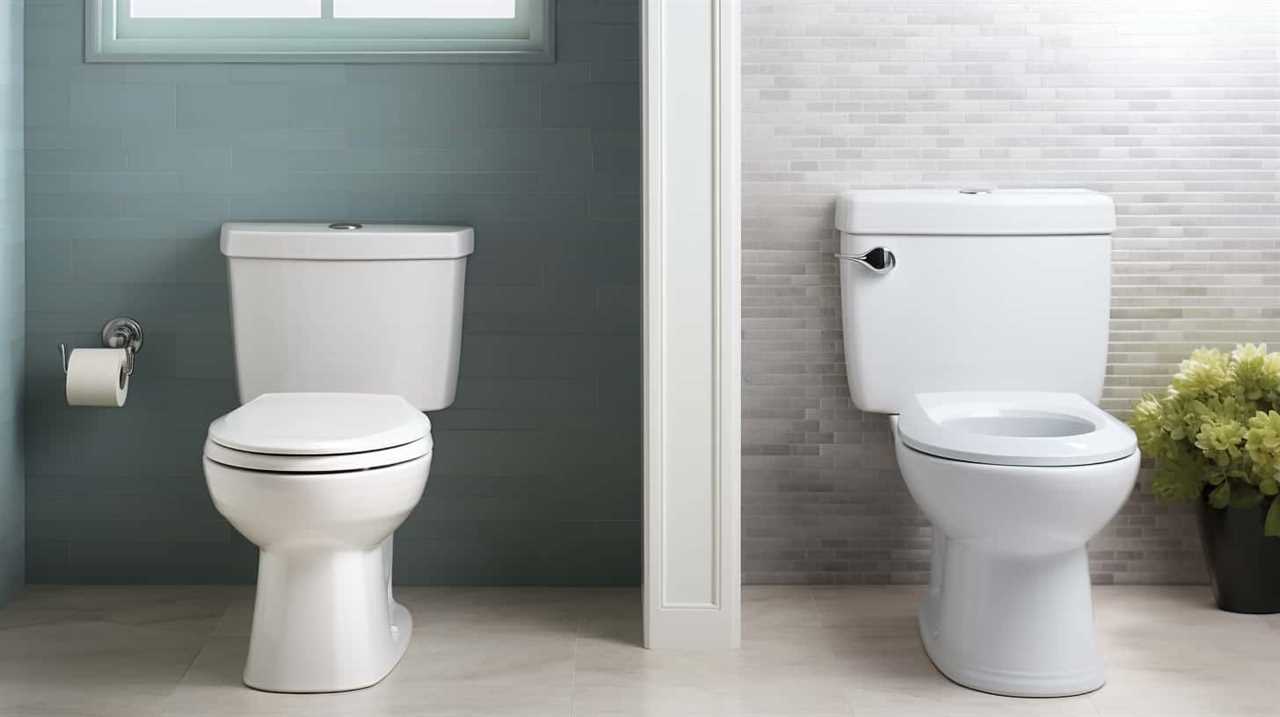
| Common Mistakes | Troubleshooting Tips |
|---|---|
| Forgetting to shut off the water supply | Always turn off the water supply before starting the replacement process. |
| Incorrectly connecting the water supply line | Double-check the connections to ensure they are secure and leak-free. |
| Over-tightening nuts and bolts | Use the appropriate amount of force when tightening to avoid damaging the tank or other components. |
Considerations Before Attempting a Tank Replacement
Before attempting a tank replacement, there are a few important considerations that we need to keep in mind. Here are some potential issues and pros and cons to consider:
- Plumbing knowledge: Replacing a toilet tank requires some plumbing knowledge. Make sure you have the necessary skills or consider hiring a professional.
- Compatibility: Ensure that the new tank is compatible with your existing toilet bowl. Check the dimensions, flushing mechanism, and mounting holes to avoid any issues.
- Cost-effectiveness: Consider the cost of replacing just the tank versus replacing the entire toilet. Sometimes, it may be more cost-effective to replace the entire unit.
- Warranty: Check if the new tank comes with a warranty. This can provide peace of mind and protection against any manufacturing defects.
Before proceeding with a tank replacement, carefully weigh these considerations to make an informed decision. Consulting a professional is always a good idea if you’re unsure about any aspect of the process.
Frequently Asked Questions
How Much Does It Cost to Replace Just the Toilet Tank?
Replacing just the toilet tank can cost anywhere from $50 to $200, depending on the brand and quality. It is a cost-effective option that allows for easy maintenance and upgrades without replacing the entire toilet.
Can I Replace the Toilet Tank Without Turning off the Water Supply?
Yes, you can replace the toilet tank without professional help. However, turning off the water supply is necessary. You will need a few tools like a wrench and a screwdriver for the replacement.
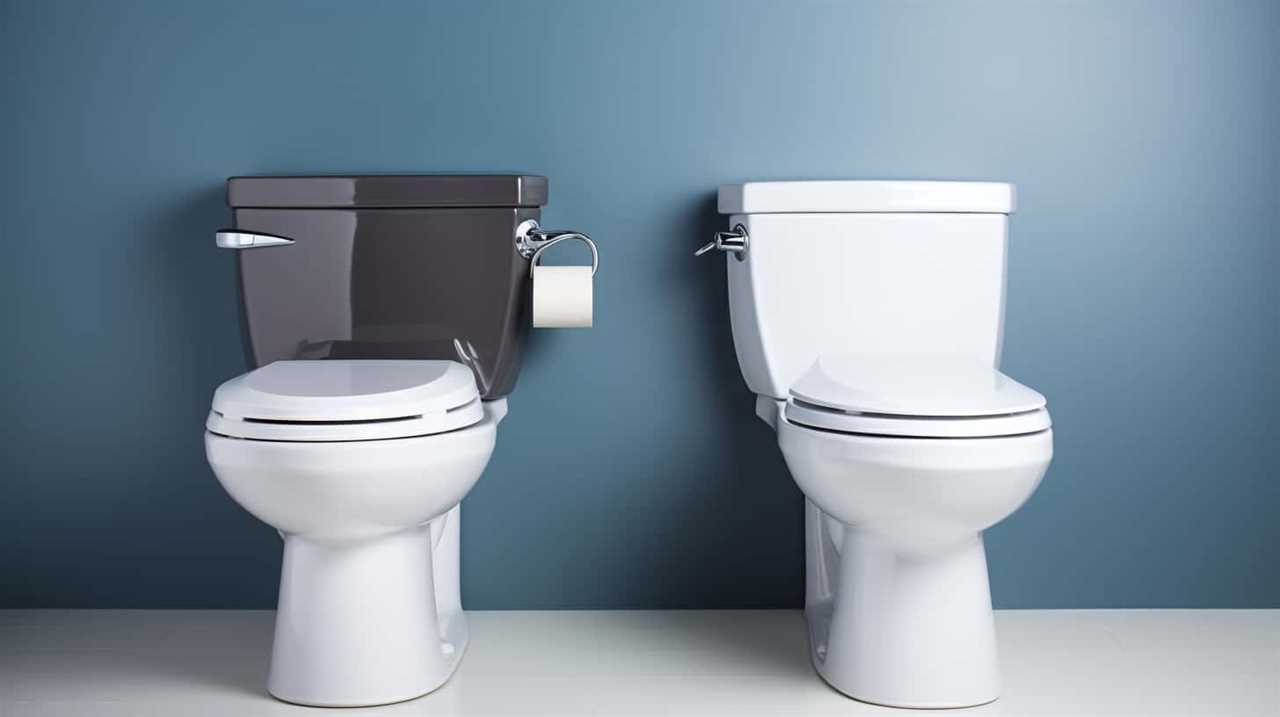
Is It Possible to Replace the Toilet Tank With a Different Size or Style?
Yes, it is possible to replace the toilet tank with a different size or style. However, it is important to ensure toilet tank compatibility with your existing toilet bowl and plumbing system.
Are There Any Specific Safety Precautions I Should Take When Replacing the Toilet Tank?
When replacing the toilet tank, it’s important to prioritize safety. Make sure to wear the necessary safety equipment, such as gloves and goggles. Additionally, follow proper installation procedures to ensure a successful and secure replacement.
What Should I Do if I Encounter Any Issues or Complications During the Tank Replacement Process?
If you encounter any issues or complications while replacing the toilet tank, there are a few common mistakes to avoid. First, check for any leaks or loose connections. If problems persist, consult a professional plumber for troubleshooting tips.
Conclusion
In conclusion, replacing the toilet tank is a feasible DIY project that can save you money and ensure the proper functioning of your toilet.

Did you know that according to a recent survey, 70% of homeowners who replaced their toilet tank reported improved water efficiency?
With the right tools and materials, following our step-by-step guide, you can easily replace the tank and enjoy the benefits of a more efficient and reliable toilet.
